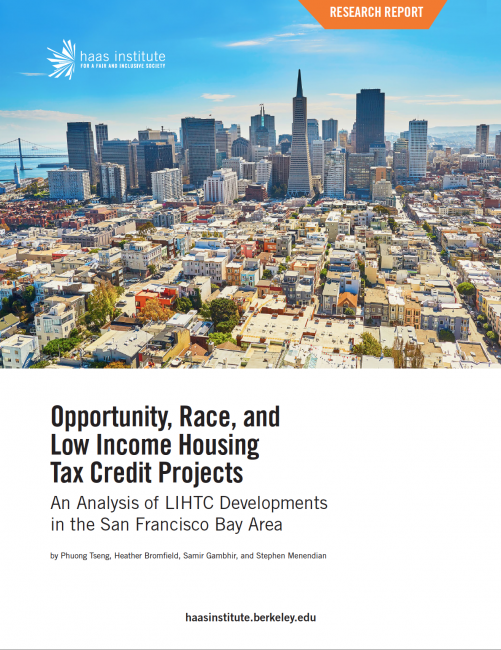New Report on Low Income Housing Tax Credit Finds Room for Improvement in Promoting Access to Opportunity for Bay Area Developments
March 14, 2017/Berkeley, CA: The Haas Institute releases a new study that comprehensively analyzes the administration of the Low Income Housing Tax Credit (LIHTC) program in California by examining LIHTC developments in the San Francisco Bay Area. This vitally important program shapes whether millions of Americans and their families have access to good jobs, safe neighborhoods, and secure housing. The findings in the report can be used by policymakers and other stakeholders to advocate for changes to California’s procedures for allocating tax credits.
The largest federal housing program in the United States, LIHTC redirects hundreds of millions of dollars per year in federal funds towards the creation and sustainability of affordable housing. Indirectly subsidized by federal coffers, states enjoy enormous discretion in administering the program and also establish the criteria for awarding the tax credit.
The analysis revealed that nearly two-thirds of LIHTC projects (64.9%) in the nine-county area were sited in Moderate, Low, and Very Low Opportunity neighborhoods during the years for which data was available (1987-2014). Nine Percent Tax Credits, which real estate developers apply for on a competitive basis, were more frequently used to create housing in High Opportunity neighborhoods than Four Percent Tax Credits, which do not have a competitive application process and which are of lesser value to developers.
However, the findings indicate that Nine Percent LIHTC projects are sited in neighborhoods that are not racially integrated; on a 3.78 : 1 basis, Nine Percent project were sited in neighborhoods where 50% or more of the population were people of color. Additionally, almost half of all Large Family housing projects, in which 25% of units have three or more bedrooms, were sited in Low and Very Low opportunity areas. This finding is particularly concerning because Large Family projects tend to house families with children, who are particularly sensitive to their neighborhoods conditions.
The measurement of “opportunity” was operationalized using the UC Davis Regional Opportunity Index (ROI) to map resources, services, and hazards in each census tract. This methodology involves using federal and state databases to calculate scores for five domains of opportunity: Education, Economy, Housing, Health/Environment, and Civic Life. The indicators, calculated using data from 2014, range from the percent of ninth-graders who graduate in four years to the levels of pollutants in the air; taken together, these indicators serve as an approximation of the conditions and realities that people in different neighborhoods experience.
The new report is the Haas Institute’s first publication on the LIHTC program in California and its second analysis of the LIHTC’s outcomes. In 2014, the Institute provided an analysis of Dallas, TX LIHTC projects that was featured in an amicus brief for the Supreme Court in the Texas Department of Community Affairs v. Inclusive Communities Project.
###





